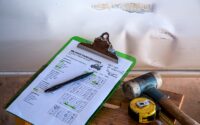Best Way to to Check a Vehicle’s Smog Test History
When buying a used vehicle, one critical aspect that often gets overlooked is the smog test history. This history can give you valuable insights into the vehicle’s emission levels and overall environmental impact. Moreover, it can indicate potential issues with the vehicle’s engine or exhaust system that might require expensive repairs down the line. Here’s a detailed guide on how to check a vehicle’s smog test history, ensuring you make an informed purchase.
Understanding Smog Tests
Smog tests, also known as emissions tests, are designed to measure the amount and type of pollutants a vehicle emits. The requirements for these tests vary by region, reflecting local air quality standards and environmental policies. In many areas, passing a smog test is a prerequisite for vehicle registration renewal, making its history an essential aspect of vehicle maintenance records.
Why Check Smog Test History?
Checking the smog test history of a vehicle can reveal:
- Consistency of Maintenance: Frequent emissions-related repairs and checks suggest that the vehicle has been well-maintained.
- Potential Problems: A history of failed smog tests can indicate issues with the vehicle’s exhaust system or engine.
- Environmental Impact: Vehicles with poor emissions records may have a greater environmental impact, which could affect their usability and desirability in areas with strict environmental regulations.
How to Check Smog Test History
- Request Information from the Seller: Start by asking the seller for the vehicle’s smog test history. Responsible sellers will keep records of all smog tests passed and any repairs done to meet emissions standards.
- Check Vehicle History Reports: Services like Carfax and AutoCheck offer comprehensive vehicle history reports that include smog test results. These reports can be accessed online by entering the vehicle’s VIN (Vehicle Identification Number).
- Visit the DMV or Local Equivalent: In some regions, the department of motor vehicles (DMV) or local equivalent maintains records of all registered vehicles, including their smog test history. Visit or contact these agencies to see if they can provide detailed reports.
- Online State Resources: Some states provide online resources where you can check a vehicle’s emissions test history. For instance, in California, the Bureau of Automotive Repair (BAR) has an online system where you can enter a vehicle’s license plate number or VIN to access its smog test history.
- Mobile Apps: Certain mobile apps have features that allow users to view vehicle histories, including smog test results. These apps typically require a subscription or a fee per report.
What to Look For
When reviewing a vehicle’s smog test history, pay attention to:
- Date and Frequency of Tests: Look for any gaps in testing, which might suggest periods of non-use or issues with vehicle registration.
- Results of Tests: Note whether the vehicle consistently passed or had instances of failure. Multiple failures could be a red flag.
- Repairs and Maintenance Notes: After a failed test, check whether appropriate repairs were undertaken and if they were successful in subsequent tests.
Legal and Regional Considerations
Be aware of the legal and regional implications of a vehicle’s smog test history. Some regions may have stricter emissions standards, and owning a vehicle that fails to meet these standards can lead to fines, registration problems, and increased maintenance costs.
If you live in an area that requires vehicles to pass regular smog checks, it’s important to know a car’s smog test  history before purchasing it. A vehicle with a long history of failing smog tests could be an indicator of serious mechanical issues or excessive emissions. Getting this information upfront can help you avoid buying a smog testing nightmare.
history before purchasing it. A vehicle with a long history of failing smog tests could be an indicator of serious mechanical issues or excessive emissions. Getting this information upfront can help you avoid buying a smog testing nightmare.
Most states have databases that track smog test results by vehicle identification number (VIN). By searching on a car’s VIN, you can view its full smog inspection history, including any failed tests, engine codes triggered during testing, and repairs made after a failed test. This data provides valuable insight into the emissions control systems and overall condition of a used vehicle.
Here are the steps to check a vehicle’s smog history in the states with the largest smog check programs:
California
California has one of the strictest and longest running smog check programs in the nation. The state maintains a database called the Vehicle Information Database (VIN database) that stores smog test results.
- Visit the California Smog Check website at www.bar.ca.gov
- Click on the “VIN Database” link under the “Smog Check” section
- Enter the Vehicle Identification Number and other requested details
- The results will show the vehicle’s full smog inspection history
Texas
The Texas smog check program is managed by the Texas Department of Public Safety and Texas Commission on Environmental Quality. Test records are available through the state’s Vehicle Inspection Report database.
- Visit the Texas Vehicle Inspection Report site at www.truck.txdps.state.tx.us
- Enter the Vehicle Identification Number
- View the results showing all safety and emissions test details
New York New York’s Vehicle Inspection Program (NYVIP) includes emissions testing for most vehicles registered in the state. Smog check histories can be looked up online.
- Go to the NYVIP website at https://process.nydmv.state.ny.us
- Click on “Check Vehicle Inspection Status”
- Enter the Vehicle Identification Number
- The results will display the inspection history and safety/emissions details
Other States
Many other states maintain similar online databases to check a vehicle’s smog history by VIN. A quick web search for “[State] vehicle inspection history” should point you to the right resources. The process generally involves entering the VIN on the applicable state website.
Why Check Smog History? Beyond just passing or failing, a vehicle’s smog check history can reveal important details about its condition:
- Emissions codes – If certain emissions codes were triggered during inspections, it could indicate issues with the catalytic converter, oxygen sensors, EVAP system, or other emissions components that may need repair.
- Excessive emissions levels – Smog tests measure specific emissions values. If these were extremely high on past tests, even after repairs, it could signal larger problems with the engine or emissions systems.
- Forced repairs – Most locations require certain emissions-related repairs after a smog check failure before allowing the vehicle to pass. Reviewing what repairs were done is insightful.
- Pattern of failures – A vehicle with a pattern of failing smog tests over several years could have an underlying issue that is difficult or expensive to repair properly.
When purchasing a used car, checking the smog history can help negotiate a fair price if issues are uncovered or avoid buying a smog testing headache altogether. Spending a few minutes online to get this data could save you from inheriting smog problems down the road.
Conclusion
Checking a vehicle’s smog test history is a crucial step in the used car buying process. It provides insights into the vehicle’s maintenance history, environmental compliance, and potential future expenses. By following the steps outlined above, you can ensure that you are making a well-informed decision, potentially saving you from costly repairs and legal troubles in the future. Remember, a clean and consistent smog test history is often indicative of a well-maintained vehicle.



